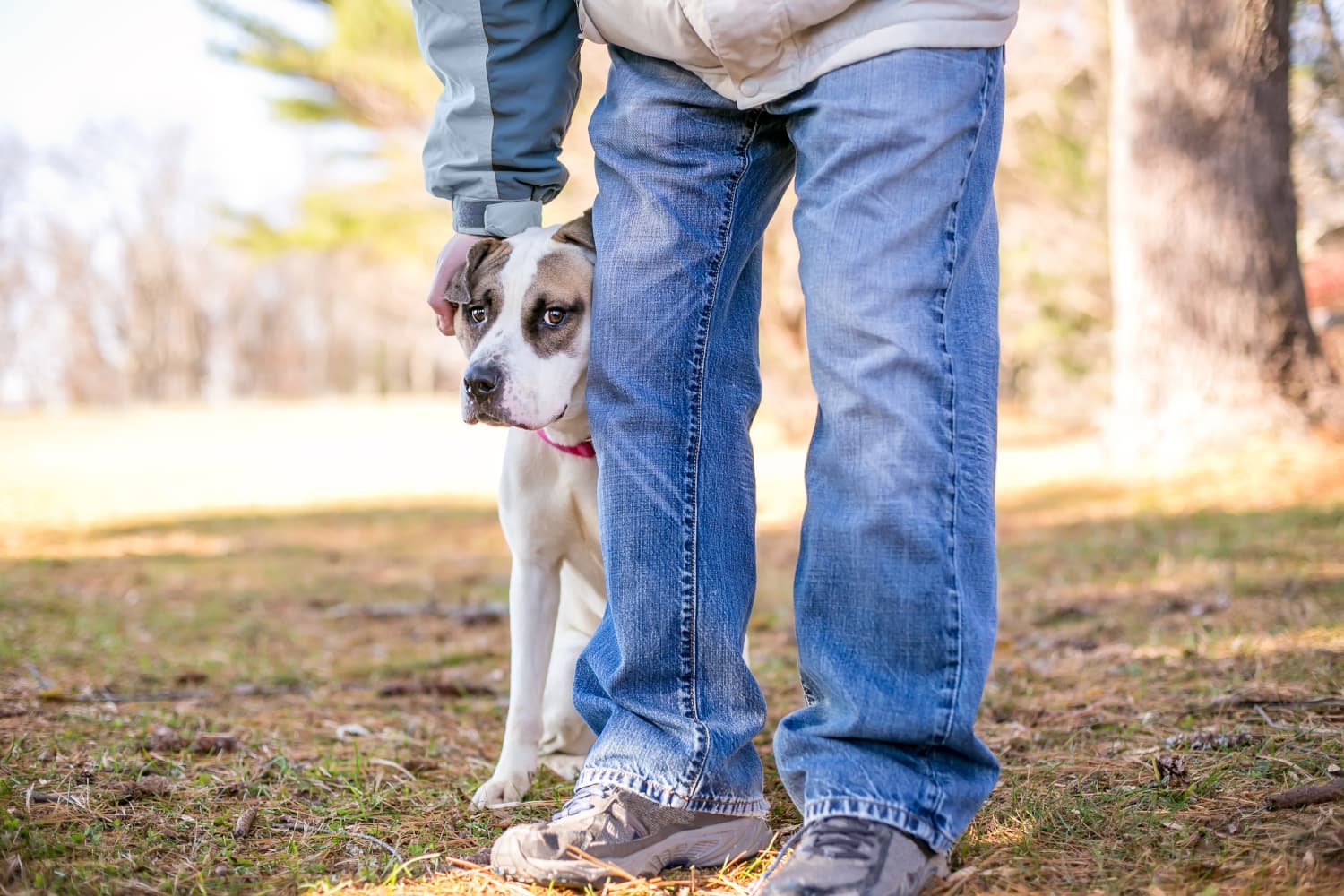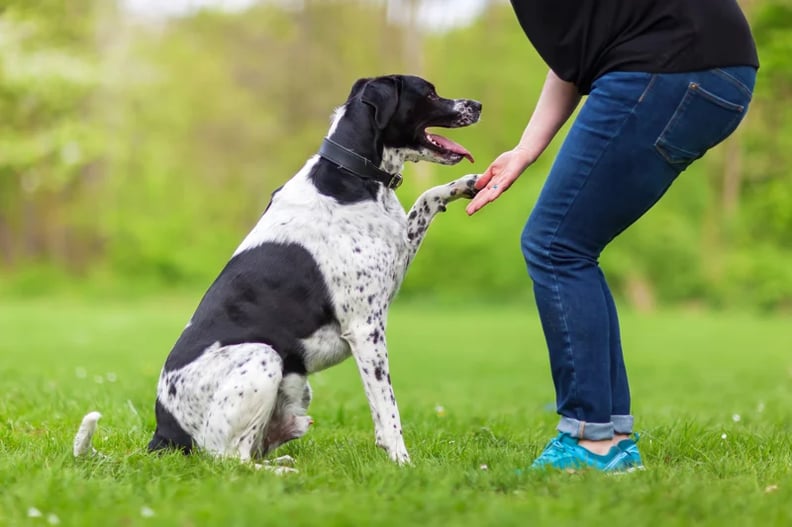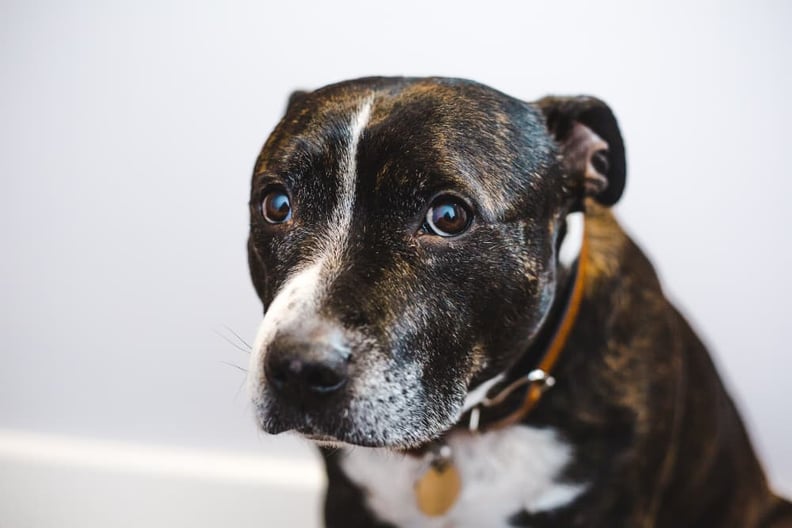
If your dog is shy and lacks confidence, he won’t be enjoying his life to the full. Shy dogs can be pretty stressed, too. So, what can you do to help your shy dog be more confident and social?
While it may seem cute when your dog hides behind your legs when a dog or person approaches, their shyness, if not addressed, can worsen if you allow it to. Extremely shy dogs can react fearfully and even aggressively when they are put in an unfamiliar situation.
The longer you wait to start building their confidence, the worse thing can get. Your dog will miss out on making new friends, engaging in natural dog behaviours, and may even limit their physical activity. Shy dogs tend to suffer more from anxiety and engage in destructive behaviours, like chewing and scratching.
Is Your Dog Shy?
Knowing how to identify shy behaviours in dogs is the first step towards teaching your dog to be confident and outgoing. Here are some common shy dog behaviours and dog body language to keep an eye out for:
-
- Hiding
- Shaking or stiff posture
- Cowering
- Tucked tail
- Low pulled back ears
- Avoiding eye contact
- Whimpering or whining
- Panting or licking lips
- Urinating
If you notice your dog showing signs of being shy, especially in new and unfamiliar situations, then it's time to start working with your dog to help them be more confident.
In this guide, we share with you our top tips on how to change your dog’s view of life and put the fun back into their social activities!
Follow The Leader

Wild dogs live in packs, existing under a recognized hierarchy. Within that clearly defined pecking order, the leader makes all the key decisions, such as when the pack hunts, rests or moves to a new territory.
Pet dogs need the same leadership level as their wild counterparts to feel safe, secure, and confident. In a home setting, the dog owner’s leadership role is more geared toward teaching their pet rather than just demanding that the pup follows commands blindly.
So, although your dog needs and thrives on a routine in his daily life, you will be your pet’s teacher, and he is the pupil. That trusting, happy, loving relationship ultimately creates a strong bond within which both owner and dog have mutual respect for each other.
Your dog can pick up subtle cues, like body language. They will follow your lead, good or bad, so make sure you show your dog that you are confident and comfortable when meeting new people, new dogs, and going to new places.
Your Dog Needs Choices
If your dog is given choices, he will feel more confident and empowered.
Of course, although some breeds of dogs are highly intelligent, the choices you offer your pet should be simple, binary options. In other words, the choice has to be on yes/no terms, which is easy for most dogs to comprehend.
For example, you might offer your dog coat the choice of taking a nap in his dog crate after playtime or snoozing in his bed outside instead. Or you can let him choose a direction when you come to an intersection on your daily walks. Make sure you offer praise and support when your dog takes charge and shows confidence.
That simple exercise encourages the dog to make a choice that will boost his confidence. That said, you are still maintaining your leader’s role by being the one who’s giving your dog the choice.
Giving too many choices can be confusing and will not give your shy dog the confidence boost you are aiming for.
Encourage Your Dog to Think For Himself
You can boost a shy dog’s confidence by encouraging him to think for himself instead of always relying on you. Problem-solving is something that shy dogs tend to be bad at. Playing games or puzzles that teach your dog to problem solve will help to build confidence.
For example, hide a few tasty dog treats or a favourite toy somewhere in your backyard. Begin by showing the dog where you’ve “hidden” the treat, and then encourage him to retrieve the treat to get his reward.
Next, have a volunteer take the dog inside the house where he can’t see you while you hide another treat. When you’re ready, let your furry friend out again and have him search for the treat.
Although you might need to give your dog a few hints to help him at first, once he’s got the hang of the game, your pet’s confidence will soar! This kind of mental stimulation for dogs also helps to reduce anxiety and boredom.
Check out Symptoms & Solutions for Dog Boredom for more tips and tricks to keep your dog entertained.
Praise Your Dog
Although owning a dog is a fulfilling and joyful experience, things can go wrong from time to time, especially when you’re toilet training your canine companion.
However, no one always gets it right, and your dog is no exception! But how to react when things go wrong heavily influences how he will respond.
When training your dog, always use positive reinforcement methods. Never resort to scolding your dog or punishing him when he makes a mistake. That approach leaves your dog stressed and often does not help them understand what you were asking of them. Your pet’s confidence levels will plummet to the point where he becomes even more shy and withdrawn.
So, when things don’t go according to plan, keep calm and don’t get flustered. Use clear verbal cues that your dog understands, such as “no" or "stop," to signal to your dog that they need to try again. When your pup gets it right, praise him with a "yes!" or a "good," and present him with his favorite treat or toy as a reward.
For more positive training tips, check out Force Free Dog Training to get basic training tips from a certified dog trainer.
Training

Taking your dog to obedience training classes is a great way of increasing his confidence and helping to combat shyness around people and other dogs. However, training your dog on a daily basis at home can help to boost and maintain his confidence.
You can use basic commands throughout the day as part of your dog’s routine. Every time your dog responds correctly to one of your commands, he builds a little more confidence. The more he gets things right, the more confident he will become, so stick to easy stuff at first, like sit, shake, or stay, and slowly build to more complicated tricks and tasks.
Remember to reward and praise your dog when he responds promptly and does as you ask. The faster you can respond, the more likely your dog is to understand he succeeded.
Keep Your Praise Genuine
Your dog might not understand the words you use, but he will pick up on the tone of your voice and your body language.
When you praise your dog, don’t go too over the top! By all means, make a fuss over your pet and give him a treat when he's done well, but don't get too excited. If you go mad with your praise, your dog might become confused or even scared, and that can dent his confidence.
Aim for happy and excited, not a full-on freakout. You want your tone to be higher pitched than your regular speaking voice but still recognizable.
Dogs that are naturally bursting with energy will probably become overexcited by over-the-top praise. That might lead to unwanted barking, jumping, or a case of the zoomies, which can derail your training session. You want to be able to go right into another trick or task shortly after the reward.
Don’t Show Favoritism
If you have a multi-dog household, be very careful that you don’t favor one over the others.
Dogs are sensitive animals and very quickly pick up on your mood. If one dog detects that you favor other housemates over him, the pup could become jealous and aggressive toward the perceived favorite.
That dog will also lose confidence and develop an inferiority complex, thinking that he will always be second best, regardless of how much he tries to please you.
Don't Be Afraid to Try New Things
Shy dogs are comfortable in their routine, and anything outside of that can seem a little scary. Part of getting your dog to leave their comfort zone involves leaving their familiar spaces and trying new things.
How long should I walk my dog? Your daily walks are a great place to start. Taking different routes allows your dog to experience new sights, smells, and sounds, not to mention they will have the opportunity to meet different humans and animals.
Other group settings like dog parks, pet stores, and doggy daycare are a great way to let your dog experience new and positive situations that will help build confidence and social skills. Just make sure you take your time and try not to rush your dog into anything too exciting at first.
Shy Dogs Can Overcome It!

If your dog is shy and lacking in confidence, there are some positive, practical steps you can take to make your dog feel and act more confident. It takes time and practice, but if you are consistent, your dog will learn to be outgoing and sociable.
Be sure to lead by example and act as your dog's pack leader, so your dog feels comfortable in new situations. Be your dog’s guide and teacher. Praise your pet when he does the right thing and encourage him to work out simple problems for himself.
If you have more than one dog, make sure you balance your time and attention evenly to prevent jealousy or insecurities. Dogs often learn best from other dogs, so group activities are a great way to help your dog learn normal dog behaviors.
If your dog is showing signs of fear or aggression, it's a good idea to reach out to a professional trainer. You can still help your dog overcome this, but they may need different steps, tools, or advice to help a dog who is extremely shy and anti-social.
.png?width=200&height=66&name=logo%20(1).png)



